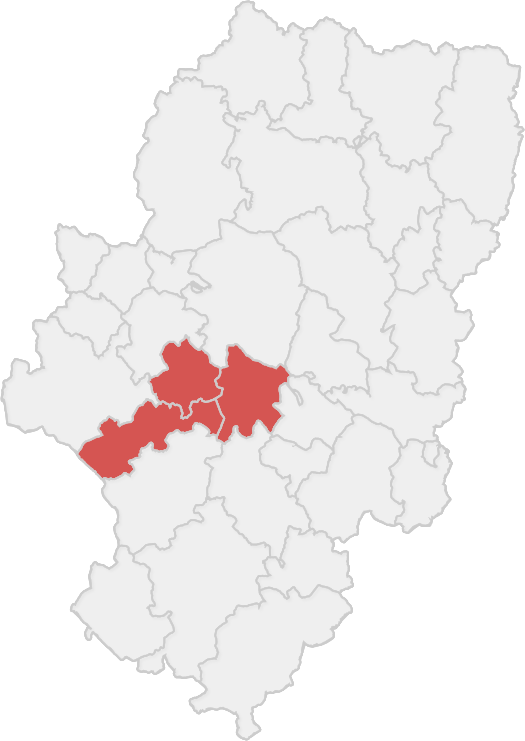Crossroads
The province of Zaragoza represents a crossroads of paths; landscapes and nuances areas full of charm, historical places and natural corners that increase the aesthetics of its contrasts. Cariñena and its connection to the world of wine, Daroca and its rich historic heritage, and the ruined silence of the old Belchite are three of those key points
Wine tradition
The history of Cariñena inevitably passes by vineyards and wines. Its roots towards this world has told to all and sundry it was a wine destination. Its name gives one of the oldest wine designations of wine origin in the country its name. All this wine tradition is reflected in the people of Cariñena, in their great commitment to the vineyard and the background knowledge contributes. Apart form wine, the old “Carae” (formerly known as it) has many other charms.
If this locality boasts of tradition and history, Daroca does the same with its architectural and cultural heritage. Among its walls are brushstrokes of cultures and styles that offer a magnificent set of sensations. The nearby Laguna de Gallocanta (one of Europe’s most important wetland areas) is another of the worth seeing places where admire, a lively natural space. A must for birdwatching lovers.
Belchite is the third point of this imaginary triangle. The old town is an eerie image of a monument to war: Inside the village devastated in the Spanish civil war but left completely untouched as a memorial to those who died there.
In short, three zones where the forms do not maintain any rule, where the passage of time recalls past eras and where the tradition stand the test of time as a connector element of all of them. Visit them is a pleasure.
Cariñena: The City of wine
The history of Cariñena has been closely linked to the world of wine, its main standard.
But besides wines and wineries, Cariñena has many other charms. Of all of them there are two that have much to do with the wine tradition of this locality: the Town Hall and the Fuente de la Mora. The building corresponds to a Renaissance-style palace built in the 16th century and next to it stands the fountain of La Mora. During the Grape Harvest Festival in Cariñena wine flows From the Fountain of La Mora instead of water. This tradition dates from 1585 with which Cariñena wanted to honor the visit of Felipe II. As religious constructions stand out the church of Ntra. Sra. de la Asunción, with numerous charms inside and its imposing tower, and the Church of Santiago, the old synagogue of the city.
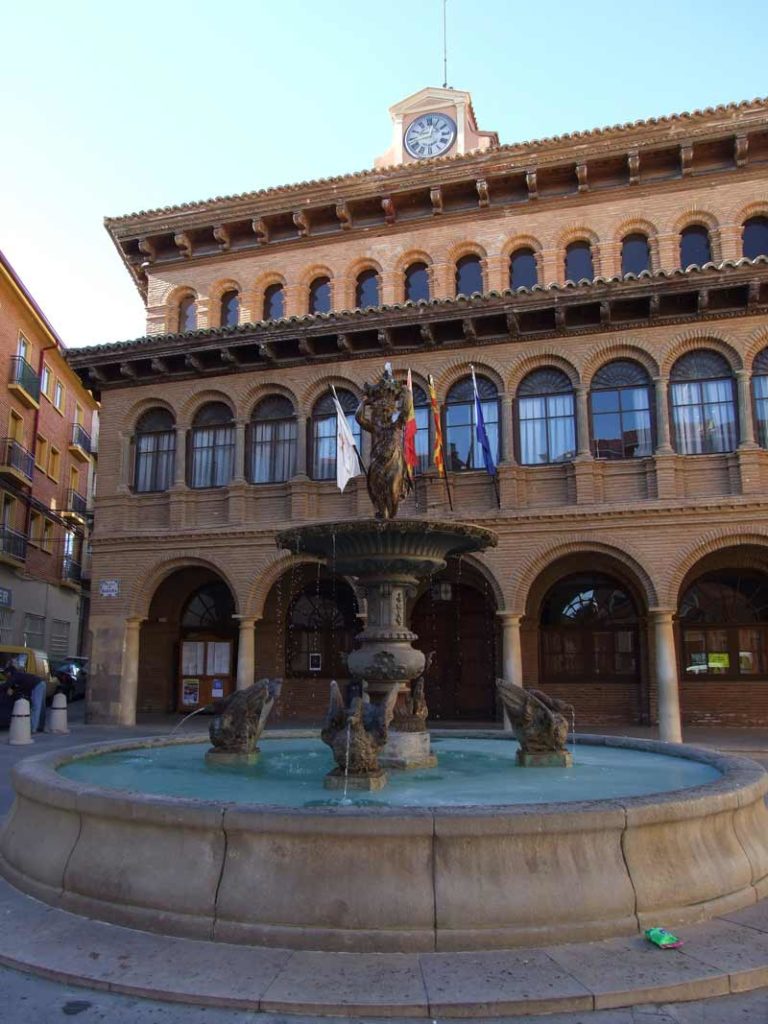
Places of Interest:
- Tower of the nuns and ramparts: the only surviving building of the ancient walls.
- Arco del Cordero (literary arch of the Lamb: one of the two that exist in the world. Its namesake is found in the Belgian city of Brujas.
- House of the Arazuri and House of the Brunette: Two examples of Aragonese architecture from the 16th and 17th centuries.
- Sanctuary of Nuestra Señora Virgen de Lagunas: Eight kilometers from Cariñena. In addition to its interesting church, it attracts visitor’s attention because a pine forest, some barbecues and rest areas are founded there. A lovely location to spend a day out with family or friends, playing games and tucking in to a picnic.
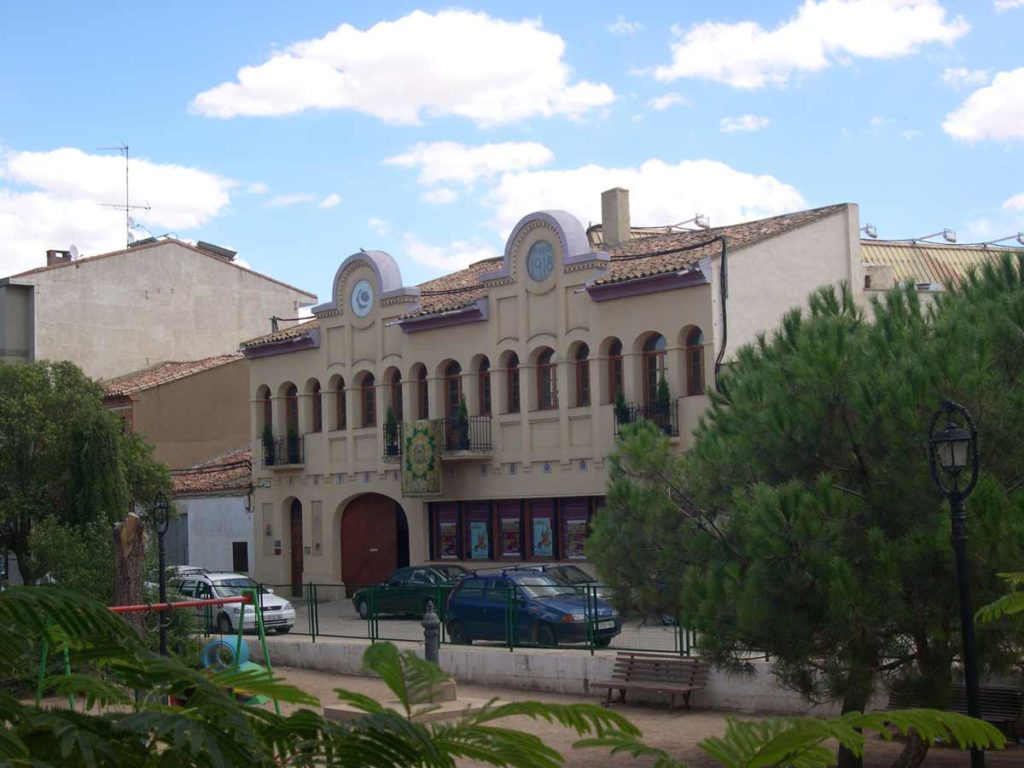
The Campo de Cariñena Wine Route
The Association for the tourism Promotion of the wine route of the Cariñena countryside combines the efforts of different establishments with the aim of offering new tourist suggestions around the wine, so that you can enjoy this genuine territory to through its landscape, monumental, culinary and oenological variety.
Wine Museum
The House of vineyards and wine, or what is the same, the Cariñena Wine Museum is in a building that sheltered from 1,918 a winery and whose predominant architectural characteristic is the façade that followed the industrial model of the beginning of the century. Today it also hosts the headquarters of the regulating Council of the denomination of origin.
Its rooms offer a sensational tour of the history and wine tradition and includes tasting room, wine cellars with wine samples all the companies belonging to the area, shop specializing in wine-related articles and other spaces in which the wine of Cariñena is a magnificent host. A must see.
A region full of charms
- The Mudejar Legacy: Mudejar art is in much of this region. One of the most beautiful reassure is the Tower of the Church of la Asunción de Nuestra Señora in Longares. Its recent restoration has given back the magnificence of the city from all points of the municipality.
- Another sample is found in Mezalocha, in the Church of San Miguel Arcangel and in its impressive tower built in the 17th century. The Tower of the church Nuestra Señora de los Angeles, in the town of Villanueva de Huerva, is another of the rich Mudejar examples established in the Campo de Cariñena.
- A natural oasis: can be found under the Hermitage of la Virgen de la Fuente in Muel. Holding it, there is a magnificent Roman wall which is reflected in the pond whose waters impregnate all brilliant colors. Undoubtedly it is the most beautiful park in this region. Waterfalls, streams, groves, walks and corners form a natural oasis full of magic. But you will not have to lose detail of the upper hermitage. Its frescoes were painted by Goya. A lovely place.
- The Mountains Range of Algairén: It is part of the central sector of the Iberian Zaragoza system which, as it passes through the region of Cariñena, crosses the municipalities of Aguarón, Cosuenda And Almonacid de la Sierra. There are many tracks and trails that go into forests where you can find mushrooms, holm oaks and even, as the only forest in Aragon, cork trees. El Santo de Aguarón and el Raso de la Cruz are connected by the same forest track. They are two beautiful places to enjoy an outdoor day out.
Enjoy Daroca

Make a long cultural visit. Castles, ramparts, palaces, doors and churches are some of the attractions that describe this city, and which consolidate it as one of the most important monumental centers of Aragon.
A tour of Daroca can be planned in different ways, although the most advisable goes through the main street that is franked by two doors: the Baja and Alta. These impressive porticoes lead us to the interior of the locality and pass directly through the urban center where there are several palaces and churches. Next to the low gate appears the fountain of the twenty pipes and, a few meters distance, there is the Ruejo, a monument dedicated to a millstone and which according to the legend avoided in the sixteenth century that the city was flooded.
But the highlight of Daroca, catching traveler’s eyes is the wall and some towers that extend over four kilometres and which served as a defensive element. Touring the wall for a little more than two hours implies an amazing experience in which castles, churches and other impressive constructions are going on.
The parish church, known as the “Colegiata de Santa Maria” or the “Nuestra Señora de los Corporales”, is a good Gothic sample of Daroca. It keeps the relic of the corporals, one of the symbols of this city. This temple has also an interesting museum with valued pieces of goldsmithery, paintings and altarpieces.
Other religious constructions are the church of San Juan, San Miguel, Santo Domingo de Silos, the Convent of Santa Ana, the Church of Nuestra Señora del Rosario, the convent of the Escolapios and the Hermitage of the Virgen de Nazaret.
In addition, the civil architecture, with superb houses and palaces, is dealt throughout the city centre. Visiting Daroca means understand its history and cultural heritage impregnated in its streets.
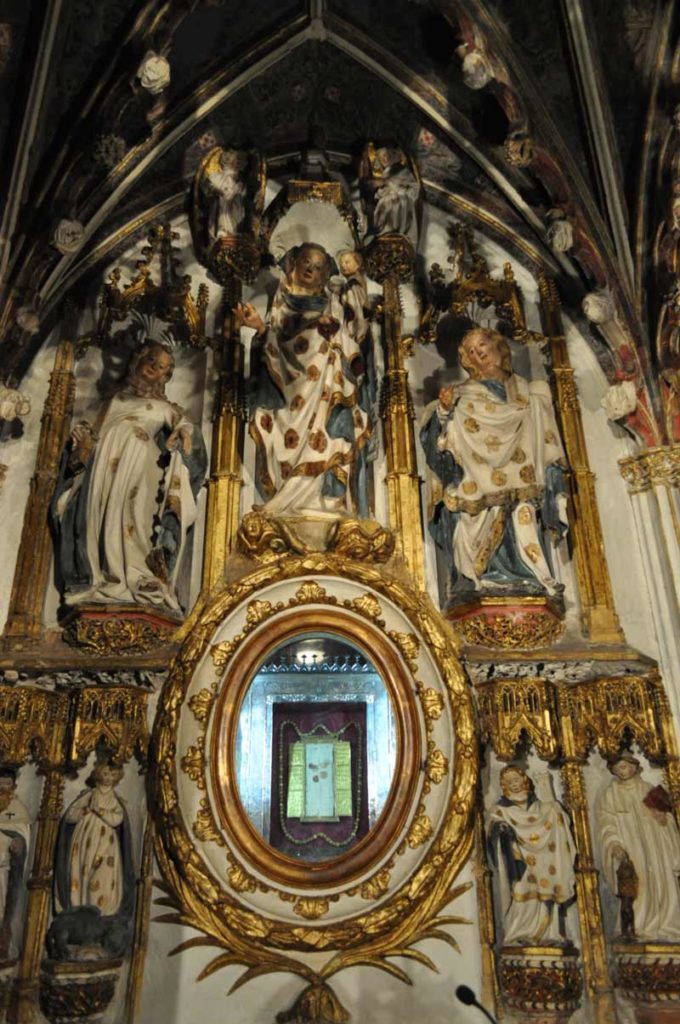
Routes close to the River
Route of Alto Jiloca: Taking the N-234 towards Teruel, it is worthwhile to follow the channel of the Jiloca River making stops in Burbáguena, Báguena or Calamocha. From here you can visit the Roman cities of “El Cerro de San Esteban” in El Poyo del Cid and “La Caridad”, in Caminreal.
Stone Route: If we take the C-211 road in the direction to Molina, we will arrive at the Laguna de Gallocanta. From there we will continue to the town of Torralba de los Frailes to contemplate the gorges of the Piedra River or we will continue towards Bilbilitanas lands. A breathtaking scene.
Laguna de Gallocanta
Classified as a special protection area for birds, Gallocanta is the largest indoor lagoon in Europe. With more than 200 species of birds Gallocanta is one of the best places to go birdwatching, forming a super natural spectacle. In addition to this faunistic mosaic in which cranes, ducks, mallards and Royal herons stand out, among other migration bids, there is a flora dominated by forests of oaks and gall oaks. It is an impressive ecosystem. It’s important to know the best times of year to see large concentrations of Cranes for which Gallocanta is famous for (up to 60,000 birds, although 10-20,000 is more normal) are between late November and February.

Other natural points
The Mountain Ranges “Sierra de Herrera de los Navarros and Santa Cruz” represent an ideal place to go hiking, contemplate in turn a fauna dominated by roe deer and wild boar or close to the birth of the rivers Jiloca, Huerva and Piedra. Another of the natural landscapes that bathe the region of Daroca is in the plain of the field of Romans; A plain of ochre lands whose sunsets reflect spectacular shapes and colors.
The Ruins Of Belchite
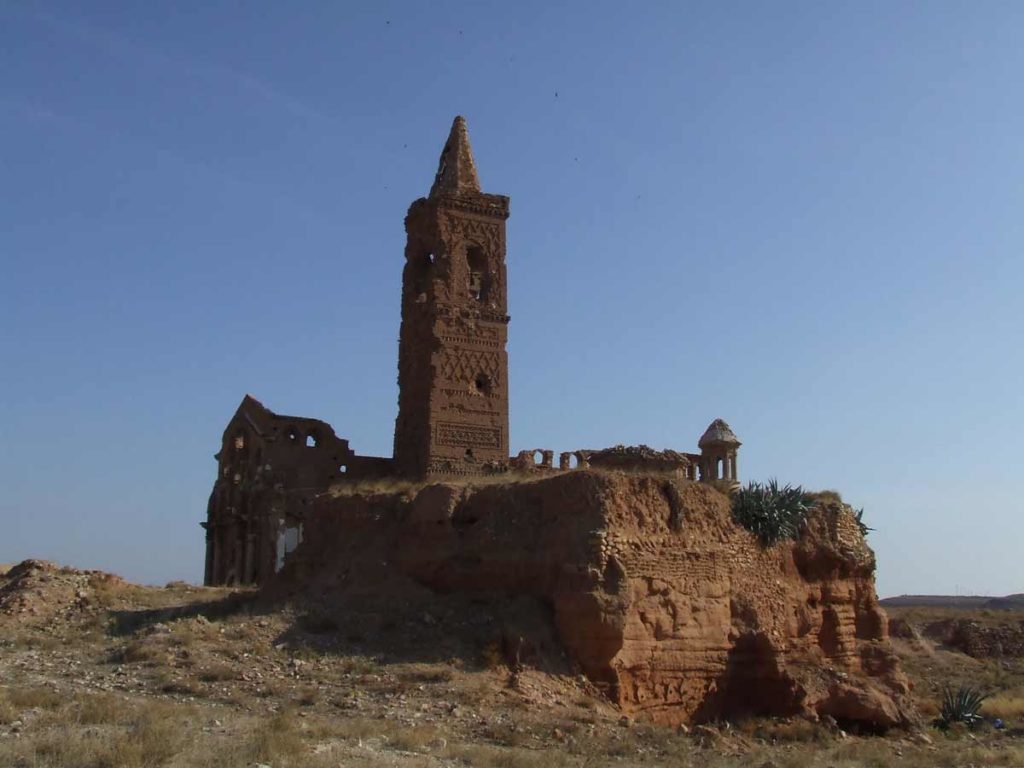
What is known as “consolidated Ruins” is a ghost town which was ruined during the bloody battle of Civil War and left untouched as a reminder of the destruction wreaked across the country. It took two weeks for the old town of Belchite to be destroyed in one of the Spanish Civil War’s bloodiest battles. Today, tourists can visit the ruined town, which has not changed since it was destroyed. Wandering through its streets and watching the effects of war are overwhelming the most fearless visitor. A site where the ravages of the war are really striking.
Guided tours to the old town can be arranged at the local tourist office. A journey along and across the historical Belchite will mark mandatory stops at the following points:
- Calle Mayor: The main communication route of this quiet villa. Begins at the arch of the village and on both sides of the street are emerging facades of an admirable artistic value.
- Arch of the village: it is believed that it was the access door to Belchite. Its construction responds to a Baroque-Mudejar style of the XVIII and leads to the main street.
- Convent of San Agustín: Located next to the square of the same name the convent also corresponds to the baroque-Mudejar.
- San Martín de Tours: Without a doubt, the most solid construction of the remaining ones except for the chapels and the dome as they are destroyed. The main remains are centered on the walls, the cover and the lateral nave. Like other buildings, brick and stone were used for construction. The main tower stands out.
- Convent of San Rafael: next to the previous church stands this convent that belonged to the order of the Dominicans of San Rafael and was built in the eighteenth century.
Tickets to the guided tours can be bought from Belchite tourist information until 30 min before the start of the tour. See up to date information on tour timetable at
Belchite Tourist Office: 976 83 07 71
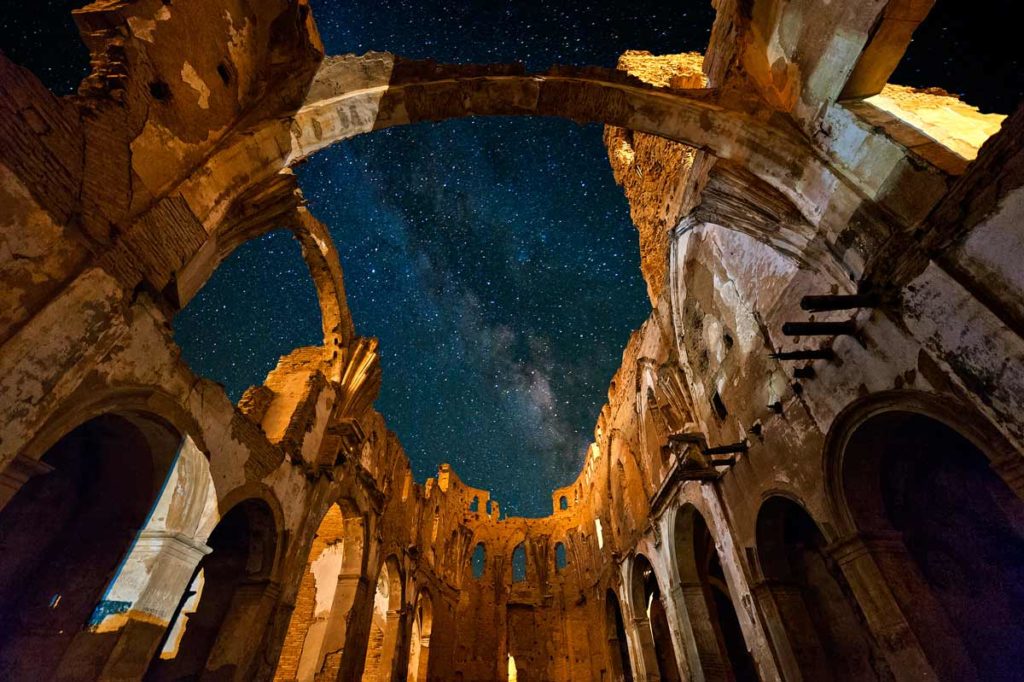
A life around Goya
At the confluence of the rivers Aguasvivas and Huerva, amid a rugged landscape full of contrasts, stands the village of Fuendetodos that has immortalized its name thanks to the brilliant Aragonese painter Francisco de Goya and Lucientes.
This tiny village centers all its resources in the work and figure of the artist, emphasizing, the Museum of the engraving where the documentation of his work is exposed. The master´s birthplace house was designated historical and artistic monument. In addition to these spaces in honor to Goya, there is a church dedicated to the assumption of the Virgin, which is a clear example of the transition from Mudejar to 17th century Baroque.
It is very worthwhile to visit it and other close village called Muel (known by the pottery) where the artist also left his stamp impregnated in the hermitage of Virgen de la Fuente.
La Malena
Just two kilometres from Azua, East direction, it is La Malena, a rustic Roman villa dating from the 4th century A.D. The incessant excavations were discovering much of the noble area of this Villa that is distributed around a large central courtyard of quadrangular floor and is surrounded by dining rooms paved with beautiful mosaics. Along with these lounges open over forty rooms, some of them decorated with polychrome mosaics.
Wines and Wineries
Numerous wine companies of the Cariñena designation of origin open their doors to the public to show “in situ” all wine making process, as well as the services and facilities of each firm.
Museums
A curious way of getting to know all the richness of these three regions can is through the various museums that are dealt throughout its geography. In the case of Cariñena, the Museum of wine shows both the tradition and the present-day wine of the Designation of origin guided by a skilled staff that supports the visit.
If we move to Daroca, the Museum of the Corporales allows to take a glance at the most symbolic miracle of this locality. Another of its museums, it is Manuel Segura Patisserie Museum, which reflects the processes followed for the elaboration of the most characteristic pastries of this company.
And as an environmental interpretation centre, the Gallocanta Bird Museum reports on migratory birds that inhabit the lagoon and the surrounding natural environment.
In the Museum of the engraving of Fuendetodos the visitor can know this technique and to know the figure of Goya. It is places just 100 meters from the artist´s birth house.
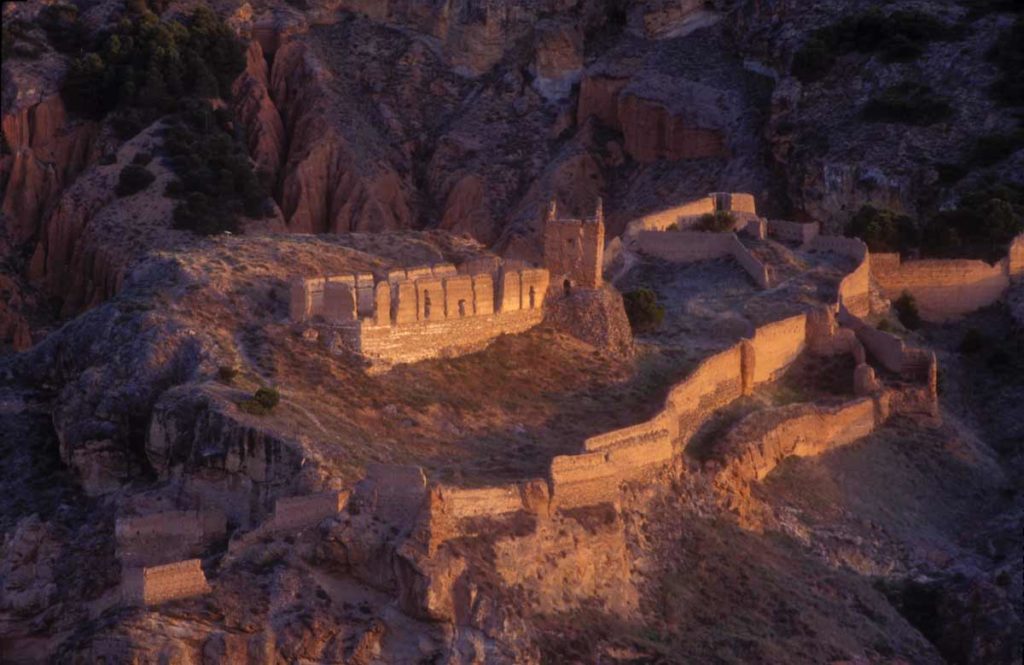
Walking trails
The main route mainly recommended for hikers and walkers that passes through these lands is the GR90. It is a great road that starts in the town of Romans and crosses the Algairén Mountain Range, flowing into the mountainous massif of Moncayo. In the same mountain range there are other more accessible variants that can be done on foot or mountain bike. The reservoir of the Torcas, in Tosos, it is also a nice space to walk next to the reservoir. In addition, there are rest and picnic areas to make as many stops as necessary.
Herrera de los Navarros and Santa Cruz Mountain Ranges, located in Daroca area, are other interesting natural space for hiking. In this area we will not fail to see the births of different rivers, an oasis of great beauty.
It should be considered that, rregardless of being low mountain, the best strategy to have fun and stay safe is to plan and prepare in advance of any amble. It is necessary to pack essentials (mountain boots, warm clothes, water, raincoat, maps and compass, among others).
Thus, Cariñena, Belchite and Daroca own plenty of paths of tracks and trails to know on foot all its charms. It’s worth discovering.
